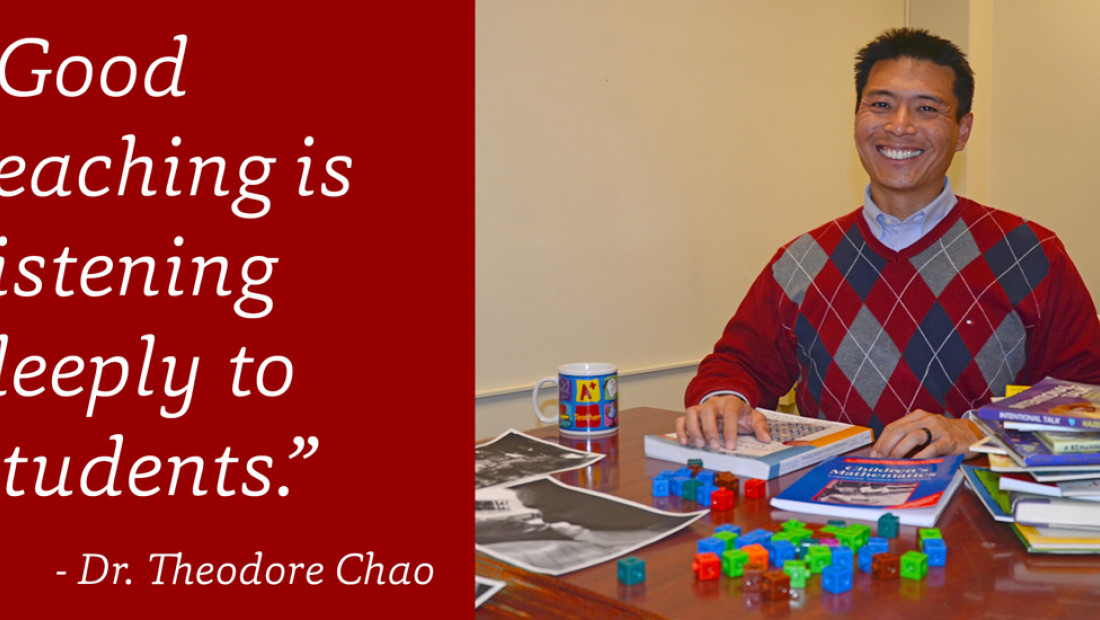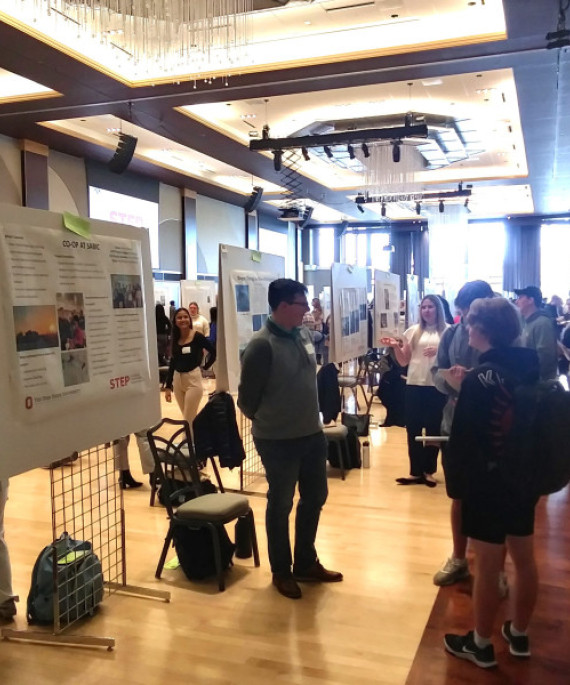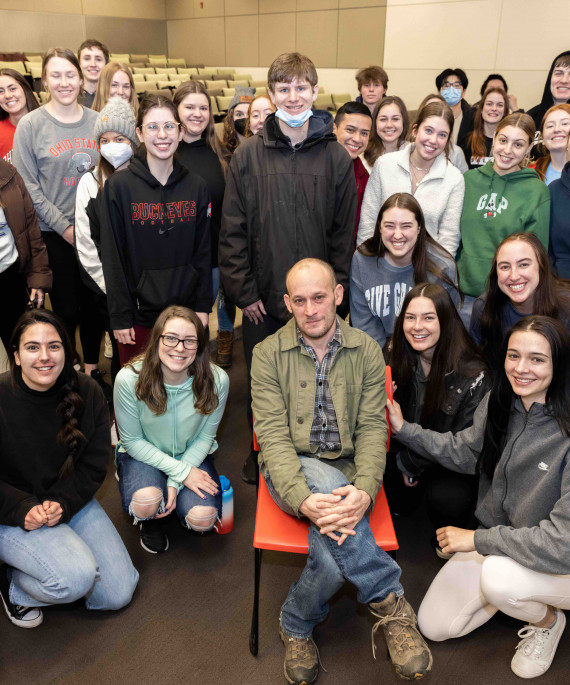
Assistant Professor Theodore Chao’s research making gains in teacher identity, student learning
Mathematics doesn’t have to be taught the same way to all people.
In fact, if children are left to explore the subject on their own, parents and teachers may be surprised at the results.
“Children are natural mathematicians,” said Theodore Chao, assistant professor of mathematics education in the Department of Teaching and Learning. “But over time, we tell our kids to learn in certain ways and they stop listening to their own intuition.”
Math teachers are diverse and math matters differently to different people.– Assistant Professor Theodore Chao
Chao and his co-investigators are exploring this theory with the help of technology. Using his background in computer science and film and video studies, Chao developed a smartphone app that helps elementary-aged children share and discuss their math strategies with teachers. Students use the app to record short videos to explain how they solve various math problems. Teachers are then able to watch, and rewatch, how the student arrived at the answer.
Early results of the study show students are gaining better understanding of their mathematical skills; and teacher performance is improving too.
“Teachers are becoming better listeners and students are able to explain their work more clearly,” Chao said.
It’s a combination that models one of Chao’s teaching philosophies. “Good teaching is listening deeply to students and then being able to respond,” he said.
Chao and his research colleagues have already completed a preliminary study using their new learning app, Thought Bubble, but plan on additional research to test additional theories.
From programmer to professor
Chao is one of the Department of Teaching and Learning’s newest faculty members. Before becoming professor at Ohio State, he was a seventh- and eighth-grade math teacher at I.S. 318 in Brooklyn, New York – the same school where the documentary Brooklyn Castle was filmed. The film takes a look inside the middle school and the challenges and triumphs facing members of the school’s championship chess team.
His start in education began with tutoring his landlord’s son. It turned out that tutoring math was a lot more fun than computer programming for Chao. That led him to apply and be accepted to the New York City Teaching Fellows, which trains talented teachers who serve in low-income communities in New York City.

Name: Theodore Chao
Title: Assistant Professor
Program Areas: Science, Technology, Engineering and Mathematics
Research Interests: Photo-elicitation and photo-voice; critical pedagogy and equity in mathematics; technology for teacher education; elementary mathematics; teacher mathematics
After being in the classroom and seeing how teachers were expected to teach and students expected to learn, Chao saw the opportunity to be a change leader.
“I really wanted to make a difference in educational policy,” he said.
To do that, he was encouraged to earn a doctorate degree so his voice, and research, could be heard.
Mixing personal, professional in the classroom
Joining the faculty at the start of the 2014-15 school year, Chao came to Ohio State after a two-year post-doctoral fellowship at Harvard University.
It was at Harvard where he continued to explore his dissertation research on mathematics teacher identity he started at The University of Texas. Chao’s curiosity in the topic was fueled by his own personal experiences as a math teacher.
“I always felt my identity as a math teacher was being defined for me,” he said.
As he began exploring math teacher identity more and more, it was apparent teachers were having their professional identities shaped through policies, politics and stereotypes. To get to the root of the issue, Chao looked away from traditional research methods in favor of a concept called photo-voice.
Photo-voice uses personal photographs important to an interviewee to explore different aspects of his or her life. The method allows Chao to develop narratives with mathematics teachers to understand the personal and professional sides of their identities and gain insight into emotional moments.
“It shows that math teachers are people and they are not one size fits all,” Chao said. “Math teachers are diverse and math matters differently to different people.”
Chao has already applied this research approach to the importance of identity with Latino/a teachers and now is exploring how gender, race and the “minority myth” affects how Asian American math teachers approach teaching.
The OSU opportunity
Being a student, a researcher or a professor at Ohio State comes with all kinds of opportunities to explore the topics you want to research, Chao said. The university has many connections that are a tremendous help.
“There’s a good mix of schools, teachers and administrators who do what they can to help Ohio State and the field of education,” Chao said. “And there is a definite push to interact in other disciplines across the university.”
To learn more about the mathematics education program in the College of Education and Human Ecology, explore the degree options in the Science, Technology, Engineering and Mathematics program.




